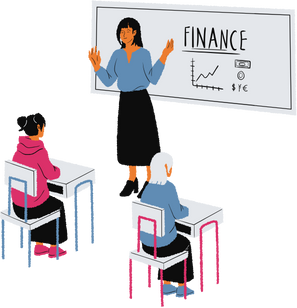
Teaching Research and Analytics in Economics and Finance at Massey University: The Role of Stata
Dongwan Choo
School of Economics and Finance, Massey University, Palmerston North, New Zealand

School of Economics and Finance, Massey University, Palmerston North, New Zealand
Disclaimer: This article represents the views and opinions of Dongwan Choo and does not necessarily represent the views or opinions of Massey University. The mere appearance of the course does not constitute an endorsement by Massey or its affiliates of the course.
Teaching the course 125785: Research and Analytics in Economics and Finance at Massey University has been a rewarding experience, providing me with the opportunity to equip Master students with essential skills for empirical research. Central to this course is the use of Stata, a powerful statistical software that has played a crucial role in helping students understand and apply econometric theories in a research context.
The course is a 30-credit module aimed at providing students with the tools required for empirical research in economics and finance. Empirical research involves testing hypotheses based on theoretical frameworks and observed data, necessitating a solid understanding of econometrics—the techniques used to study relationships between variables. Unlike traditional econometric courses that focus heavily on deriving complex equations and theoretical proofs, our course emphasizes practical application. This approach ensures students can both understand and apply econometric principles effectively in their research.
The course is structured around a weekly 3-hour lecture focusing on theory and methodology, complemented by a 1-hour computer lab dedicated to running code-along sessions using Stata. This combination of theoretical instruction and practical application ensures that students can immediately apply what they learn in lectures to real-world data analysis tasks.
Stata has been integral to the teaching and learning process in this course. As a statistical software package widely used by researchers in economics and finance, Stata offers a range of functionalities that facilitate comprehensive data analysis and econometric modelling. The decision to use Stata was driven by its user-friendly interface, extensive documentation, and robust analytical capabilities, making it an ideal tool for students new to econometrics and data analysis.
From the outset, students are introduced to Stata's various functions. We begin with basic commands and gradually progress to more complex analyses. This hands-on approach ensures that students gain practical experience in data manipulation, visualization, and regression analysis. For instance, students learn to import datasets, clean and organize data, and perform descriptive statistics using Stata. These foundational skills are essential for any empirical research project.
The weekly 1-hour computer lab sessions are particularly beneficial. During these sessions, students follow along with live coding demonstrations. This code-along format allows them to see firsthand how to implement the techniques discussed in lectures. They learn to execute commands, troubleshoot errors, and interpret outputs in real-time, reinforcing their understanding through practice. These labs foster an interactive learning environment where students can ask questions and receive immediate feedback, enhancing their comprehension and confidence in using Stata.
As the course progresses, students delve into more advanced econometric techniques such as multiple regression analysis, time-series analysis, panel data analysis, and difference-in-difference estimation. Stata's powerful regression tools allow students to explore relationships between variables, test hypotheses, and interpret results within the context of economic and financial theories. By using real-world data, students can directly apply econometric theories to practical problems, enhancing their understanding and retention of the material.
In the computer labs, we explore these advanced techniques through detailed examples. For instance, students might analyse the impact of macroeconomic indicators on stock market performance or assess the effects of policy changes on economic growth. These sessions not only solidify students' technical skills but also demonstrate the relevance and applicability of econometric methods to contemporary economic and financial issues.
One of the highlights of teaching this course has been the positive feedback from students regarding their experience with Stata. Many students have expressed appreciation for how Stata has demystified the process of regression analysis. They find the software's intuitive interface and comprehensive capabilities make it easier to grasp complex econometric concepts. Students particularly value the practical, hands-on approach, which allows them to apply theoretical knowledge to real-world data.
Feedback indicates that students feel more confident in their ability to conduct empirical research independently. They have praised the weekly code-along sessions, noting that these labs provide a supportive environment to learn and practice new skills. Many students have also highlighted the immediate applicability of what they learn, mentioning that they feel well-prepared to tackle their own research projects using Stata.
One of the key objectives of the course is to prepare students for independent research. Stata's capabilities extend beyond simple regression analysis; it also includes tools for conducting diagnostic tests, dealing with issues such as multicollinearity, heteroscedasticity, and autocorrelation, and performing robustness checks. These features are crucial for producing high-quality, reliable research. By mastering these techniques in Stata, students are better equipped to handle the complexities of empirical research and contribute meaningful insights to the field of economics and finance.
Teaching the 125785 course at Massey University has underscored the importance of practical, application-focused learning in econometrics and data analysis. The combination of theoretical instruction and hands-on Stata labs has been particularly effective in helping students grasp complex concepts and apply them in real-world contexts. Stata has proven to be an invaluable tool, enabling students to conduct empirical research with confidence and precision. The positive feedback from students regarding their learning experience with Stata reinforces its role as a crucial component of the course. As they move forward in their academic and professional careers, the knowledge and experience gained from this course will undoubtedly serve them well, allowing them to contribute valuable insights to the fields of economics and finance.
Reproduced with permission from Dongwan Choo